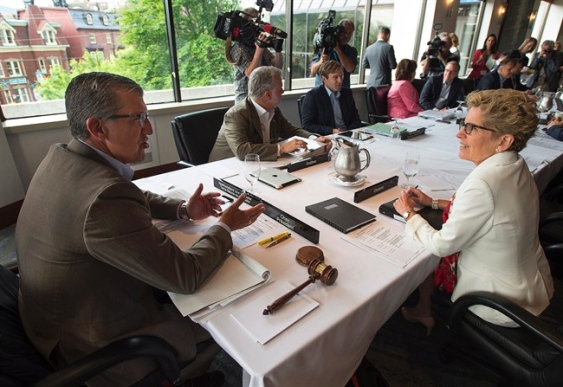-
Tips for becoming a good boxer - November 6, 2020
-
7 expert tips for making your hens night a memorable one - November 6, 2020
-
5 reasons to host your Christmas party on a cruise boat - November 6, 2020
-
What to do when you’re charged with a crime - November 6, 2020
-
Should you get one or multiple dogs? Here’s all you need to know - November 3, 2020
-
A Guide: How to Build Your Very Own Magic Mirror - February 14, 2019
-
Our Top Inspirational Baseball Stars - November 24, 2018
-
Five Tech Tools That Will Help You Turn Your Blog into a Business - November 24, 2018
-
How to Indulge on Vacation without Expanding Your Waist - November 9, 2018
-
5 Strategies for Businesses to Appeal to Today’s Increasingly Mobile-Crazed Customers - November 9, 2018
Environmental groups give mixed reviews on Canadian energy strategy
A related vision statement says the strategy should be “consistent with efforts to reduce greenhouse gas emissions” as it “contributes to continued economic growth and prosperity for all Canadians”. Those changes don’t mean putting a cap on oil sands production, as environmental groups have demanded, but they nearly certainly need to include more robust and specific targets for emissions reductions.
Advertisement
Erin Flanagan, an oilsands analyst with the Pembina Institute, had a more positive take on the document as it mentions carbon pricing – something not all provinces have adopted yet. “It’s indicative of how it’s virtually impossible on the subject of energy to get something that pleases Central Canada and Western Canada at the same time”.
The strategy is expected to be released later Friday.
Manitoba Premier Greg Selinger acknowledged that striking the right balance could be hard, but that an energy strategy for the country was necessary.
The oil-producing province of Alberta originally conceived the strategy as a way to ensure that it could move its fuel to market.
“It’s absurd that while Alberta is dealing with one of the largest spills in Canadian history that Canada’s premiers would try to help pave the way for more tar sands pipelines”, said Mike Hudema of Greenpeace Canada in a statement.
Alberta Premier Rachel Notley says all the premiers are committed to the responsible and safe development of our energy resources as well as transporting them safely and responsibly.
The goal of the national strategy is to balance the promotion of a strong oil and gas industry with equally strong environmental protection – an objective Ontario Premier Kathleen Wynne believes is realistic. He repeated that “oil is not a four-letter word” and described the discussion around the table as “vigorous”. “I hope we can be a little bolder in the energy strategy, to say that oil and gas is a good thing”. “One of them is around energy independence”.
“The major outstanding condition, the biggest gap between where we need to be and where we are today, in terms of being able to export oil from Alberta … is the fact that we need world-class spill response on the water”. As such, it’s nearly certain to disappoint partisans on both sides of the debate, and those looking to the Canadian Energy Strategy as a silver bullet – either for getting pipelines built or preventing that from happening – aren’t going to like what’s actually in it.
He described the previous landscape as like playing a game of “whack-a-mole”. The NWT continues to look at the feasibility of an “Arctic Gateway” pipeline. “We only have one customer for this product so far”. “That’s what the meetings are about, that’s why it’s important to have Canada’s premiers meet together because then we can move the agenda forward”.
Advertisement
JOHN’S, N.L. – Canada’s premiers are raising concerns about the high number of aboriginal children in care as they urge the federal government to help them address the issue.





























